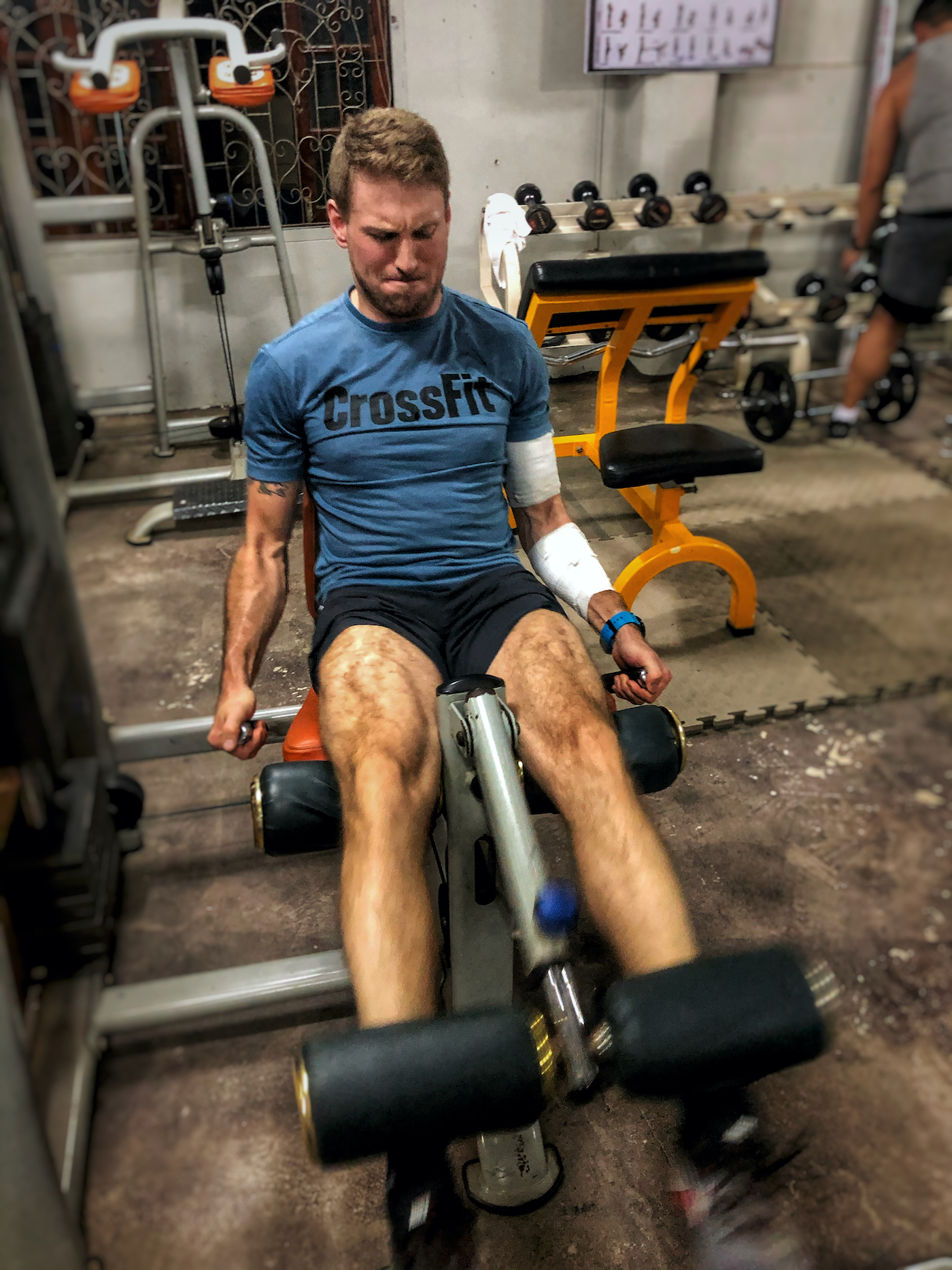Get Fit, Stay Active: Unlocking the Power of Functional Strength Training for Seniors
Table of Contents
The Power of Functional Strength Training
Functional strength training is a highly effective approach to exercise that focuses on enhancing the strength, mobility, and stability needed for everyday activities. This type of training involves performing exercises that mimic real-life movements, working multiple muscle groups simultaneously. Functional strength training is particularly beneficial for seniors, as it helps maintain independence and improves overall quality of life.
What is Functional Strength Training?
Functional strength training is a form of exercise that emphasizes movements and exercises that are directly applicable to daily activities. Unlike traditional strength training that often isolates specific muscles, functional strength training focuses on training the body as a whole, enhancing coordination, balance, and mobility. By incorporating exercises that mimic activities like bending, lifting, pushing, and pulling, functional strength training helps seniors improve their ability to perform these tasks with ease.
Functional strength training exercises often involve the use of body weight, resistance bands, or light weights. These exercises engage multiple muscle groups simultaneously, improving overall strength and stability. By incorporating functional strength training into your fitness routine, you can enhance your ability to perform everyday tasks with greater ease and confidence.
Benefits of Functional Strength Training for Seniors
Functional strength training offers a multitude of benefits for seniors, including:
- Improved functional capacity: By specifically targeting movements and exercises that mimic daily activities, functional strength training helps seniors improve their ability to perform tasks like getting up from a chair, carrying groceries, or climbing stairs.
- Enhanced balance and stability: Functional strength training exercises challenge the body’s balance and stability, improving coordination and reducing the risk of falls. This is especially important for seniors, as falls can have serious consequences.
- Increased muscle strength and endurance: By engaging multiple muscle groups simultaneously, functional strength training helps seniors build overall strength and endurance. This can make everyday activities easier and reduce the risk of muscle weakness and frailty.
- Improved joint mobility and flexibility: Functional strength training exercises often involve a wide range of motion, helping to improve joint mobility and flexibility. This can enhance overall movement and reduce the risk of joint stiffness and discomfort.
- Enhanced bone density: Weight-bearing functional strength training exercises, such as squats and lunges, can help improve bone density and reduce the risk of osteoporosis in seniors. It’s important to consult with a healthcare professional before starting any exercise program, especially if you have a pre-existing medical condition.
Incorporating functional strength training into your fitness routine can have a significant positive impact on your overall health and well-being. By engaging in exercises that replicate real-life movements, you can maintain your independence, improve your functional capacity, and enjoy an active and fulfilling lifestyle.
To explore specific functional strength training exercises for seniors, refer to our article on functional strength training exercises. If you’re interested in designing a functional strength training program, check out our guide on functional strength training program.
Tailoring Exercise to Seniors
As a senior, it’s important to tailor your exercise routine to meet your specific fitness needs and ensure safety during your workouts. Understanding the unique considerations for senior fitness and implementing safety measures will help you get the most out of your functional strength training routine.
Understanding Senior Fitness Needs
When it comes to senior fitness, certain considerations come into play. As we age, our bodies undergo changes that can affect our strength, flexibility, and balance. It’s important to focus on exercises that improve these areas, promoting overall functional fitness and enhancing daily activities.
Functional strength training exercises, which mimic movements we use in daily life, are particularly beneficial for seniors. These exercises target multiple muscle groups and help improve coordination, stability, and mobility. They can make activities such as lifting groceries, climbing stairs, or getting out of a chair easier and safer.
To learn more about functional strength training exercises, take a look at our article on functional strength training exercises.
Safety Considerations for Seniors
Safety should always be a top priority when engaging in any exercise routine, especially for seniors. Here are some important safety considerations to keep in mind:
- Consult your healthcare provider: Before starting any new exercise program, it’s crucial to consult with your healthcare provider, especially if you have any pre-existing medical conditions or concerns.
- Start slow and progress gradually: Begin with exercises that are appropriate for your current fitness level. Gradually increase the intensity, duration, and complexity of your workouts over time to avoid overexertion or injury.
- Proper form and technique: Focus on maintaining proper form and technique during exercises. This will help prevent strain on joints and muscles and reduce the risk of injury. If you’re unsure about proper form, consider working with a qualified fitness professional who can guide you.
- Balance and stability: Incorporate exercises that improve balance and stability, as these are important factors in preventing falls and maintaining independence. Balance exercises such as standing on one leg or heel-to-toe walking can be beneficial.
- Listen to your body: Pay attention to how your body feels during exercise. If you experience pain, dizziness, or shortness of breath, stop and rest. Pushing through discomfort can lead to further injury.
For more information on designing a safe and effective functional strength training program for seniors, check out our article on functional strength training program.
By understanding the specific fitness needs of seniors and implementing safety precautions, you can engage in functional strength training with confidence, improving your overall strength, mobility, and quality of life. Remember to always prioritize your safety and enjoy the journey towards better health and fitness.
Functional Exercises for Seniors
To unlock the power of functional strength training for seniors, it’s important to incorporate a variety of exercises that target different muscle groups and improve overall functionality. Here are some functional exercises that can be beneficial for seniors:
Squats and Lunges
Squats and lunges are excellent exercises for building lower body strength, improving balance, and enhancing mobility. These exercises target the muscles in your legs, hips, and buttocks. Start with bodyweight squats and lunges, and as you become more comfortable, you can gradually add weights or resistance bands to increase the intensity. Remember to maintain proper form and consult with a fitness professional if needed.
Push-Ups and Modified Push-Ups
Push-ups are effective for strengthening the muscles in your chest, shoulders, and arms. They also engage your core muscles for stability. If traditional push-ups are challenging, modified push-ups can be a great alternative. Modified push-ups can be performed by keeping your knees on the ground or using an elevated surface, such as a bench or wall, to reduce the amount of weight you’re lifting.
Step-Ups and Stair Climbing
Step-ups and stair climbing exercises are fantastic for working your lower body and improving balance and coordination. You can use a step platform or a sturdy staircase to perform these exercises. Start with a lower step height and gradually increase it as you become more comfortable and confident. If needed, you can hold onto a railing or have someone assist you for added stability.
Balance Exercises
Balance exercises are crucial for seniors as they help improve stability and reduce the risk of falls. Simple exercises like standing on one leg, heel-to-toe walk, or side leg lifts can be effective for enhancing balance. You can also incorporate balance tools like balance boards or stability balls to challenge yourself further. Remember to perform these exercises in a safe environment with support nearby if needed.
Core Strengthening Exercises
A strong core is essential for maintaining good posture, stability, and overall functional strength. Exercises like planks, abdominal crunches, and seated Russian twists can help strengthen your core muscles. Start with exercises that suit your fitness level and gradually progress as you become stronger. It’s important to engage your core muscles properly and avoid straining your neck or lower back during these exercises.
By incorporating these functional exercises into your fitness routine, you can improve your strength, balance, and overall functional fitness. Remember to start with exercises that are suitable for your fitness level and gradually progress as you become more comfortable. For more information on functional strength training, check out our article on functional strength training exercises.
Designing a Functional Strength Training Routine for Seniors
To get the most out of your functional strength training routine as a senior, it’s important to design a program that meets your specific needs and goals. Consider the following factors when creating your routine: warm-up and cool-down, frequency and duration of workouts, and progression and adaptation.
Warm-Up and Cool-Down
Before diving into your functional strength training exercises, it’s crucial to properly warm up your muscles and prepare your body for the workout ahead. A dynamic warm-up, consisting of movements that mimic the exercises you’ll be performing, can help increase blood flow, improve flexibility, and reduce the risk of injury. Incorporate exercises such as leg swings, arm circles, and gentle joint rotations to warm up your body.
Similarly, cooling down after your workout is essential to gradually bring your heart rate and breathing back to normal. This can be done through light aerobic exercises, static stretching, and deep breathing. Cooling down helps prevent muscle soreness and promotes better recovery. For more information on warm-up and cool-down techniques, check out our article on functional strength training exercises.
Frequency and Duration of Workouts
When determining the frequency and duration of your functional strength training workouts, it’s important to strike a balance between challenging your body and allowing for proper recovery. Aim for at least two to three sessions per week to allow enough time for muscle adaptation and growth. This frequency can vary depending on your fitness level and overall health.
In terms of duration, start with shorter sessions, typically around 30 minutes, and gradually increase the length as you become more comfortable and stronger. Remember to listen to your body and allow for rest days between workouts to prevent overexertion. For a structured functional strength training program tailored to seniors, refer to our article on functional strength training program.
Progression and Adaptation
To continue reaping the benefits of functional strength training, it’s important to progressively challenge your body over time. This can be achieved by gradually increasing the intensity, resistance, or complexity of the exercises you perform. Progression can involve adding weight, increasing repetitions or sets, or incorporating more advanced variations of the exercises.
Adaptation is equally important. As you age, your body may have different needs and limitations. Be mindful of any discomfort, pain, or limitations you may experience during your workouts. Modify exercises or seek guidance from a fitness professional to ensure that your routine is safe and effective for your specific needs. For additional workout ideas and inspiration, explore our article on functional strength training workouts.
By incorporating a proper warm-up and cool-down, determining the right frequency and duration for your workouts, and progressively adapting your routine, you can design a functional strength training program that suits your goals and abilities as a senior. Remember to consult with a healthcare professional before starting any new exercise program, especially if you have any pre-existing medical conditions. Stay motivated, stay consistent, and enjoy the numerous benefits that functional strength training can bring to your life.
Staying Motivated and Consistent
To make the most out of your functional strength training journey as a senior, it’s important to stay motivated and consistent with your workouts. Here are some key strategies that can help you maintain your focus and achieve your fitness goals.
Setting Realistic Goals
Setting realistic goals is essential for staying motivated throughout your functional strength training program. When setting goals, it’s important to consider your current fitness level, any physical limitations, and what you hope to achieve. Start small and gradually increase the intensity and duration of your workouts as you progress.
Setting specific, measurable, attainable, relevant, and time-bound (SMART) goals can provide you with a clear roadmap for success. For example, your goal could be to improve your upper body strength by being able to perform 10 push-ups within three months. Tracking your progress and celebrating milestones along the way can also help you stay motivated and see the results of your hard work.
Finding Enjoyment in Exercise
Finding enjoyment in your exercise routine is crucial for long-term adherence. Choose activities that you genuinely enjoy and that align with your interests and preferences. This could include activities like dancing, swimming, hiking, or participating in group fitness classes. Experiment with different exercises to find what brings you joy and keeps you engaged.
Additionally, exercising with a partner or joining a fitness community can provide added motivation and accountability. Whether it’s joining a local exercise group or participating in virtual fitness classes, having a support system can make your workouts more enjoyable and increase your commitment to staying active.
Incorporating Variety in Workouts
Maintaining variety in your workouts is not only important for preventing boredom but also for challenging different muscle groups and avoiding plateauing. Incorporate a mix of strength, cardio, and flexibility exercises into your routine. This could include exercises such as squats, lunges, push-ups, balance exercises, and core strengthening exercises.
By exploring different exercises and workout formats, you can keep your workouts fresh and exciting. Consider trying new functional strength training exercises to target different muscle groups and improve overall functional fitness. For more ideas on exercises, check out our article on functional strength training exercises.
Remember, staying consistent with your functional strength training routine is key to reaping the benefits. Find what motivates you, set achievable goals, and keep your workouts interesting and varied. With dedication and perseverance, you can unlock the power of functional strength training and enhance your overall well-being.








